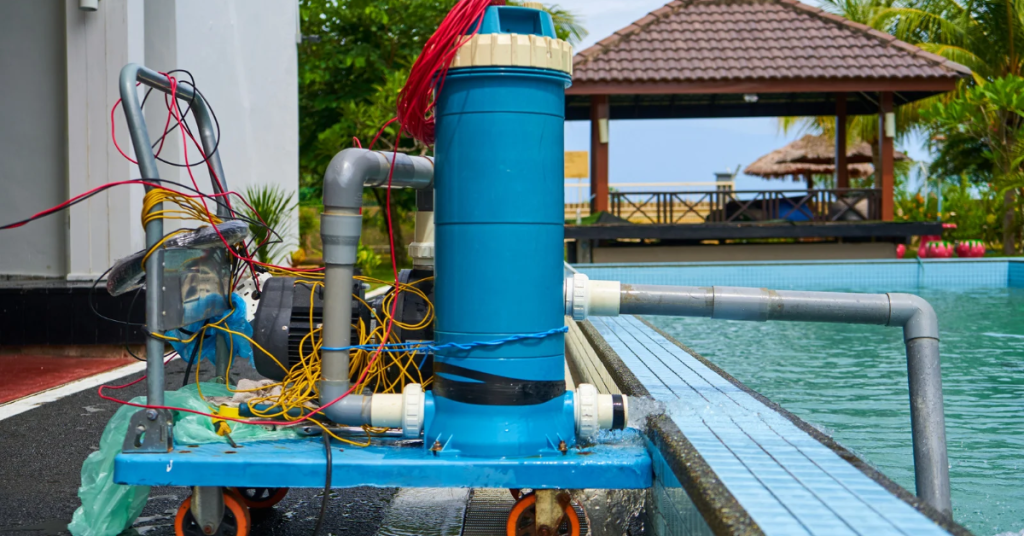When I first installed a pool, I didn’t think much about the electrical setup. But as soon as the electrician asked about the pump’s amperage, I realized how important it was to know how much power a pool pump actually uses. A pump isn’t just a part of your pool—it’s the heart of the filtration system. If it draws too much power for your breaker or wiring, it can lead to tripping, overheating, or even fire risks.
Most residential pool pumps pull between 6 to 20 amps, depending on their horsepower, voltage, and whether it’s a single-speed or variable-speed model. This number directly affects how much energy the pump consumes and how your electrical system needs to be configured. If you’re setting up a new pool, replacing an old pump, or trying to figure out why your electric bill is high, knowing the amp draw is a smart first step. Also you can get professonal services from Electrician Burbank CA.
I’m not an electrician, but as a homeowner, I’ve learned how to read pump labels, calculate amp usage, and match the right breaker for safety. In this post, I’ll walk you through what I learned—how to find out how many amps your pump uses, what size breaker it needs, and how to avoid common mistakes that cost time and money.

Average Amp Usage by Pool Pump Type
The number of amps your pool pump draws depends mostly on the horsepower (HP) and voltage. Here’s a quick guide that helped me figure things out when choosing between models:
Horsepower (HP)—Voltage—Typical Amp Draw
0.75 HP—115V—6–9 amps
1.0 HP—115V—10–12 amps
1.5 HP—115V—12–16 amps
2.0 HP—230V—8–10 amps
Variable-speed—230V—3–16 amps (adjustable)
In my case, my original pump was a 1.5 HP model running on 115V. It pulled around 14 amps. When I upgraded to a variable-speed pump, I noticed a big drop in energy use because I could lower the speed during light usage hours.
How to Find Your Pool Pump’s Amperage
The easiest way to check your pool pump’s amp draw is by looking at the motor label—usually found on the side or top of the motor casing. It will show details like:
Horsepower (HP)
Voltage (V)
Amperage (A) or Full Load Amps (FLA)
If that label is faded or missing, you can also find the same info in the product manual or on the manufacturer’s website using the model number.
I also learned how to calculate it manually in case you only know the wattage:
Amps = Watts ÷ Volts
For example, if the pump uses 1,500 watts and it’s on a 120V circuit:
1,500 ÷ 120 = 12.5 amps
This helped me double-check the numbers before upgrading my breaker and wiring.
What Breaker Size Should You Use?
You need to match your circuit breaker and wire size to the amp draw of the pump. If it’s too small, the breaker will trip constantly. Too large, and it could be unsafe. Here’s what I followed:
10–15 amps → 20-amp breaker
16–20 amps → 30-amp breaker
I also made sure the wiring matched. For a 20-amp breaker, I used 12-gauge wire. For a 30-amp setup, I went with 10-gauge. My Burbank Electrician confirmed it was within code and safe to run.
Are Variable-Speed Pumps More Efficient?
Yes, variable-speed pool pumps use fewer amps because they don’t run at full power all the time. Most models allow you to program different speeds for filtering, backwashing, or cleaning. At low speeds, they draw as little as 3 to 5 amps.
My variable-speed pump usually runs at low speed for 12 hours a day and ramps up for a couple of hours when needed. The result? My electric bill dropped by almost 40% the first month. It’s a higher cost upfront, but the long-term savings made it worth it.
Final Thoughts
Knowing how many amps your pool pump uses helps you make safer, smarter decisions. Most residential pumps pull between 6 and 20 amps, depending on horsepower, voltage, and whether it’s a single or variable-speed unit. You can check this info on the motor label or calculate it using watts and volts. If you are confused and located Burbank, CA area’s you can take help of the expert residential pool pumps electrician.
Before wiring or replacing a pump, double-check the breaker and wire size. That’s what I did, and it gave me peace of mind knowing my setup was safe, efficient, and less likely to cause trouble. A little planning can go a long way when it comes to pool power.
